#3 in Vietnam
Popular Gỏi Cuốn Variations
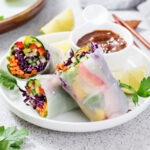
Gỏi Cuốn Chay (Vegetarian/Vegan Fresh Spring Roll)

Gỏi Cuốn Bò Nướng
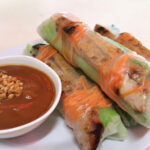
Gỏi Cuốn Nem Nướng

Gỏi Cuốn Bơ Xoài
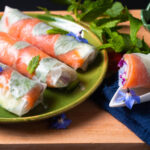
Gỏi Cuốn Cá Hồi
Gỏi Cuốn: Ingredients and Preparation
Main Ingredients
Main Cooking Method
Preparation Process
Gỏi Cuốn: A Deep Dive
Cultural Significance
Taste
Texture
Aroma
Color
Serving Style
Serving Temperature
Accompaniment
Occasions
Seasons
Special Diets
Calories
Popularity
Popular Similar Dishes
- Bì Cuốn
- Bò Bía
- Lumpiang Sariwa
- Poh Pia Sod
Popular Dining Area
Gỏi cuốn, also known as Vietnamese fresh spring rolls or summer rolls, is a Vietnamese dish that includes pork, shrimp, vegetables, and rice vermicelli, all wrapped in translucent rice paper.
These rolls are distinctive for being served fresh and at room temperature, not fried like some other spring roll variations.
They are commonly enjoyed as an appetizer and can be dipped in various sauces, such as a peanut sauce, hoisin sauce, or nước mắm tỏi ớt (Vietnamese dipping sauce).
The ingredients and the method of preparation can vary by region within Vietnam and in different countries where they have become popular.
I’ll lead you through the distinct features and flavors of the dish, delve into its components, explore its various forms, suggest pairings, recommend where to enjoy it, weigh its advantages and disadvantages, compare gỏi cuốn with bò bía, address common queries, and look at similar dishes.
Key Points
Gỏi Cuốn Images
What Are The Main Ingredients of Gỏi Cuốn?
Here are the typical ingredients found in gỏi cuốn:

Pork
One of the primary proteins used in the roll.
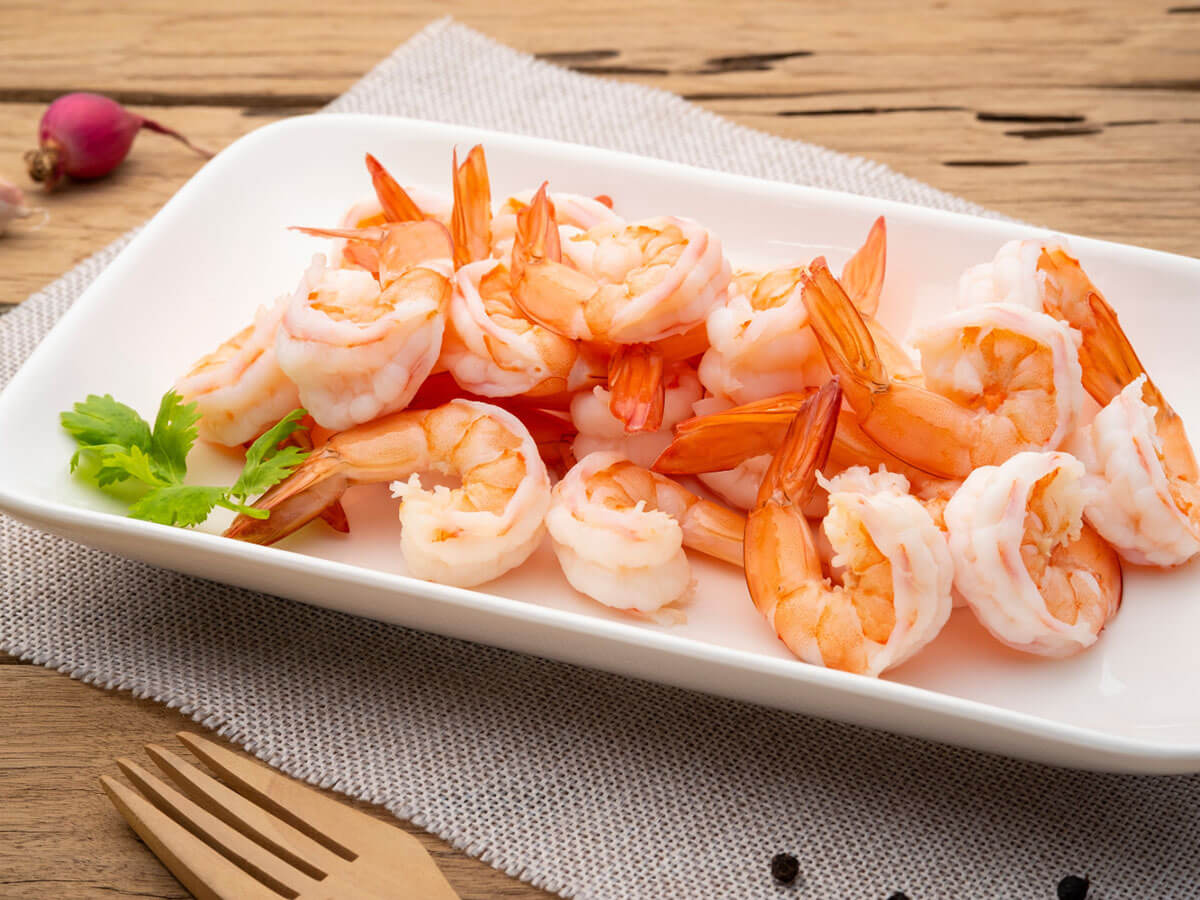
Shrimp
Often paired with pork as another source of protein.

Vegetables
Can vary, but commonly includes lettuce (such as green leaf or butter lettuce), mint, cilantro, Thai basils, cucumber, bean sprouts, etc.

Noodles
Bún or rice vermicelli noodles.
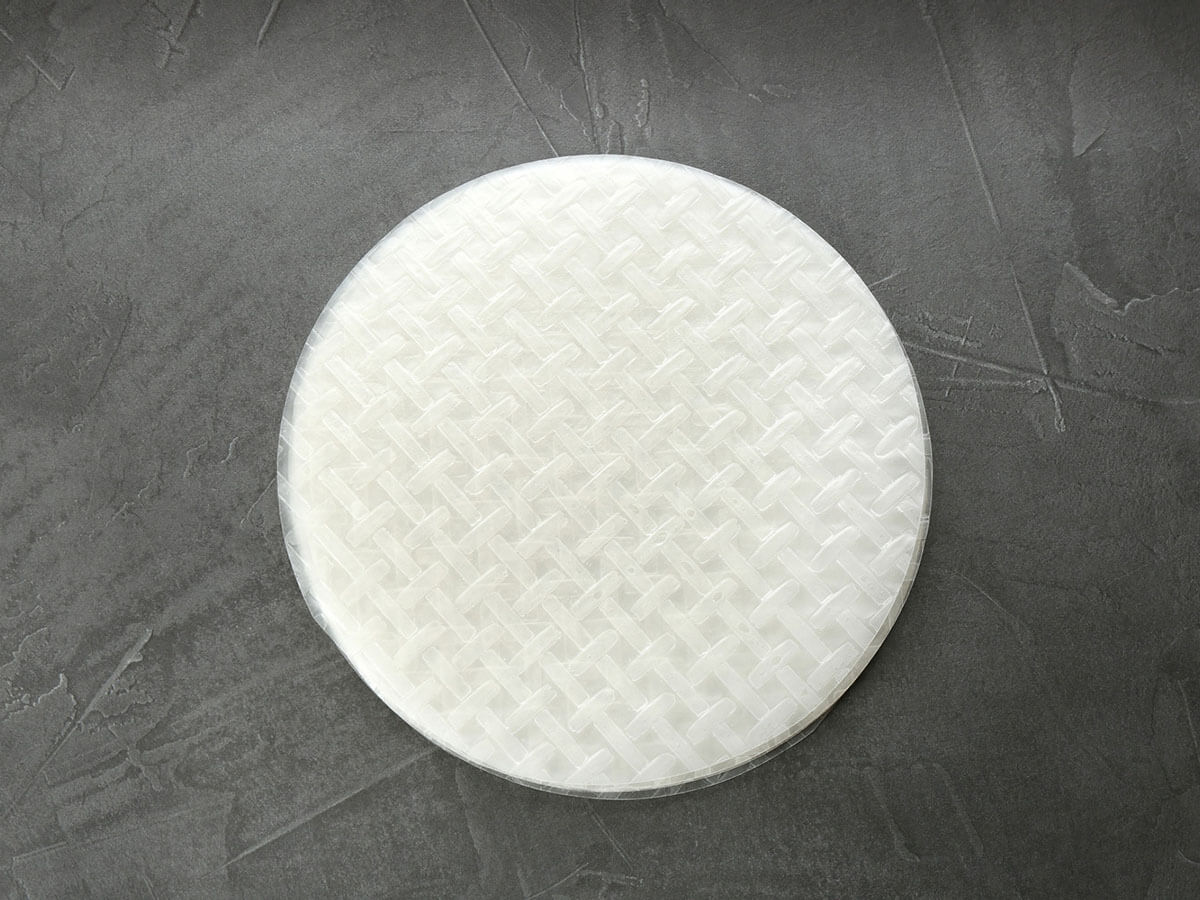
Wrapper
Bánh tráng (rice paper).
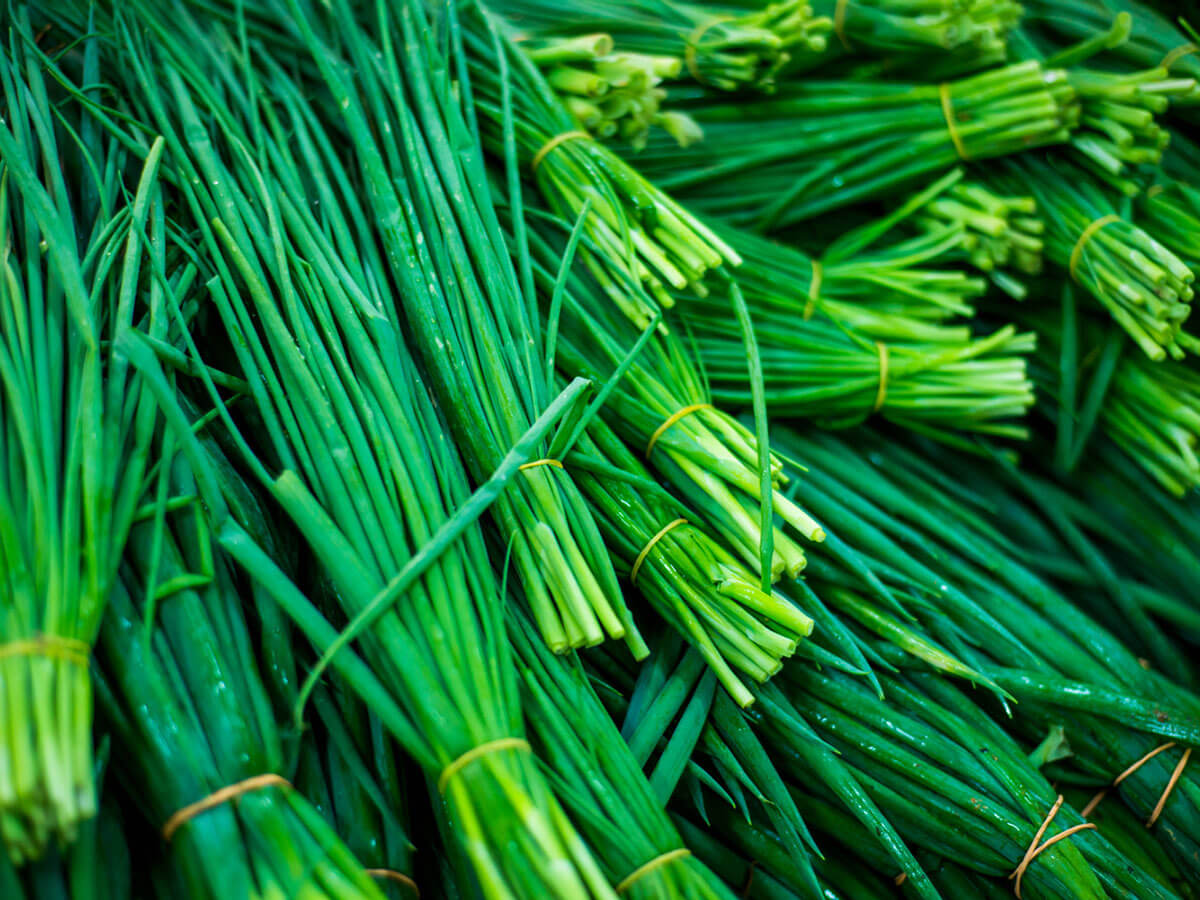
Other Ingredients
Chives or spring onion (optional, for garnish or added flavor)
Exploring these core components lays the foundation for appreciating the delightful array of gỏi cuốn variations
What Are Different Variations of Gỏi Cuốn?
There are several variations of gỏi cuốn, which can include different fillings based on regional preferences, dietary restrictions, or creative twists. Below is a simple breakdown:

Bì Cuốn
This version is filled with seasoned shredded pork and pork skin (bì), which gives it a unique texture.

Gỏi Cuốn Bò Nướng
Filled with flavorful grilled beef.
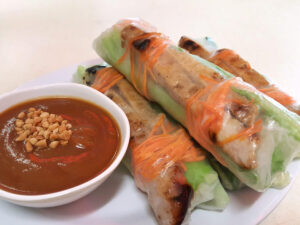
Gỏi Cuốn Nem Nướng
Contains savory grilled pork sausage.

Gỏi Cuốn Bơ Xoài
A fruitier, tropical twist of gỏi cuốn.
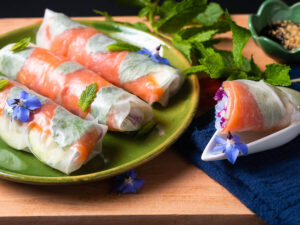
Gỏi Cuốn Cá Hồi
Features salmon, often with a twist of dill.
The variety of these rolls not only shows the versatility of gỏi cuốn but also highlights the importance of pairing them with the right gỏi cuốn accompaniments to enhance the overall flavor experience.
What to Serve with Gỏi Cuốn?
Gỏi cuốn are typically served with a variety of accompaniments that complement their fresh and light flavor. Here are some suggestions for what to serve with Gỏi cuốn:

Dipping Sauces
The most essential accompaniment for Gỏi cuốn is a dipping sauce. The traditional sauce is nước chấm, a mixture of fish sauce, lime juice or vinegar, water, sugar, garlic, and chili peppers. A hoisin-peanut sauce is also a popular choice, offering a sweet and savory flavor profile.
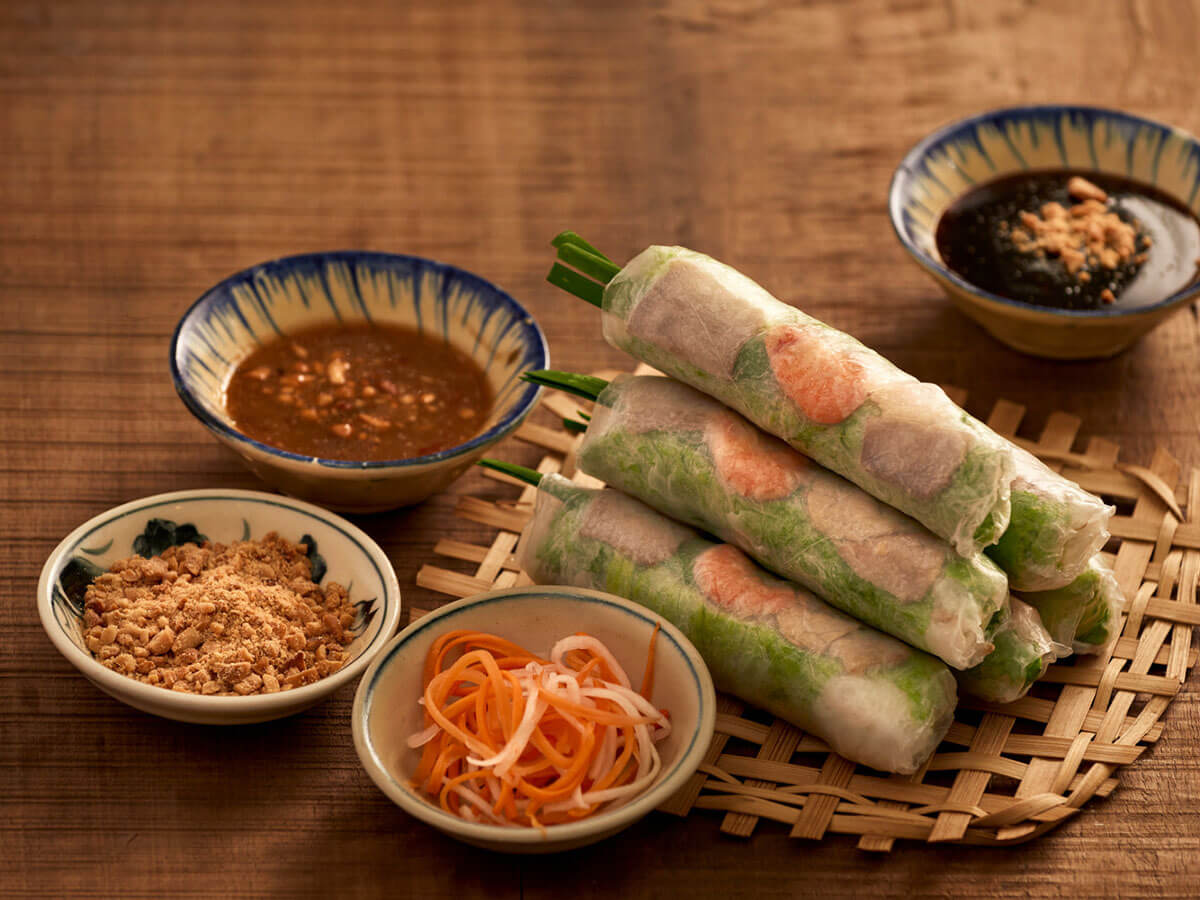
Pickled Vegetables
Pickled carrots and daikon radish, known as đồ chua, can add a tangy and crunchy element that pairs well with the soft texture of the spring rolls.
Pairing gỏi cuốn with these sides makes the meal more enjoyable, and finding good places to eat gỏi cuốn can turn it into a fun food experience.
Where to Eat Gỏi Cuốn?
If you’re looking for places to eat gỏi cuốn, here are some general tips for finding a good spot:
In Hanoi
Cuốn N Roll
Address:
Location 1: 3rd Floor, D2 Building, Giang Vo, Ba Dinh District, Hanoi
Location 2: No. 3, Alley Ba Trieu, Hai Ba Trung District, Hanoi
Location 3: No. 17T6 Hoang Dao Thuy, Thanh Xuan District, Hanoi
Location 4: 1st Floor, Sunrise Building, 90 Tran Thai Tong, Cau Giay District, Hanoi
Gỏi Cuốn 11 Phùng Hưng
Address: No. 11 Phung Hung, Hang Ma, Hoan Kiem District, Hanoi
Quán Ngon Cô Dung
Address: 46 Tran Xuan Soan, Hai Ba Trung District, Hanoi
In Saigon (Ho Chi Minh City)
Gỏi Cuốn Tôm Nhảy LLQ
Address: 424 Lac Long Quan, District 11, Ho Chi Minh City
Quán Gỏi Cuốn Hạnh
Address: 420A Hoa Hao, District 10, Ho Chi Minh City
Gỏi Cuốn Cô Hồng
Address: T2 Nguyen Huu Hao, District 4, Ho Chi Minh City
Visiting these spots is great for enjoying gỏi cuốn and also for weighing the pros and cons, like freshness versus convenience, of eating this Vietnamese specialty.
Pros and Cons of Eating Gỏi Cuốn
Here are some pros and cons associated with bò bía:
Pros
Cons
Choosing gỏi cuốn comes with both health benefits and practical considerations, much like comparing them to bò bía, with each having its own set of advantages and trade-offs.
Gỏi Cuốn Vs. Bò Bía
Gỏi cuốn and bò bía are both popular dishes in Vietnamese cuisine that share some similarities but also have distinct differences. Below is a detailed explanation about the comparison between them.
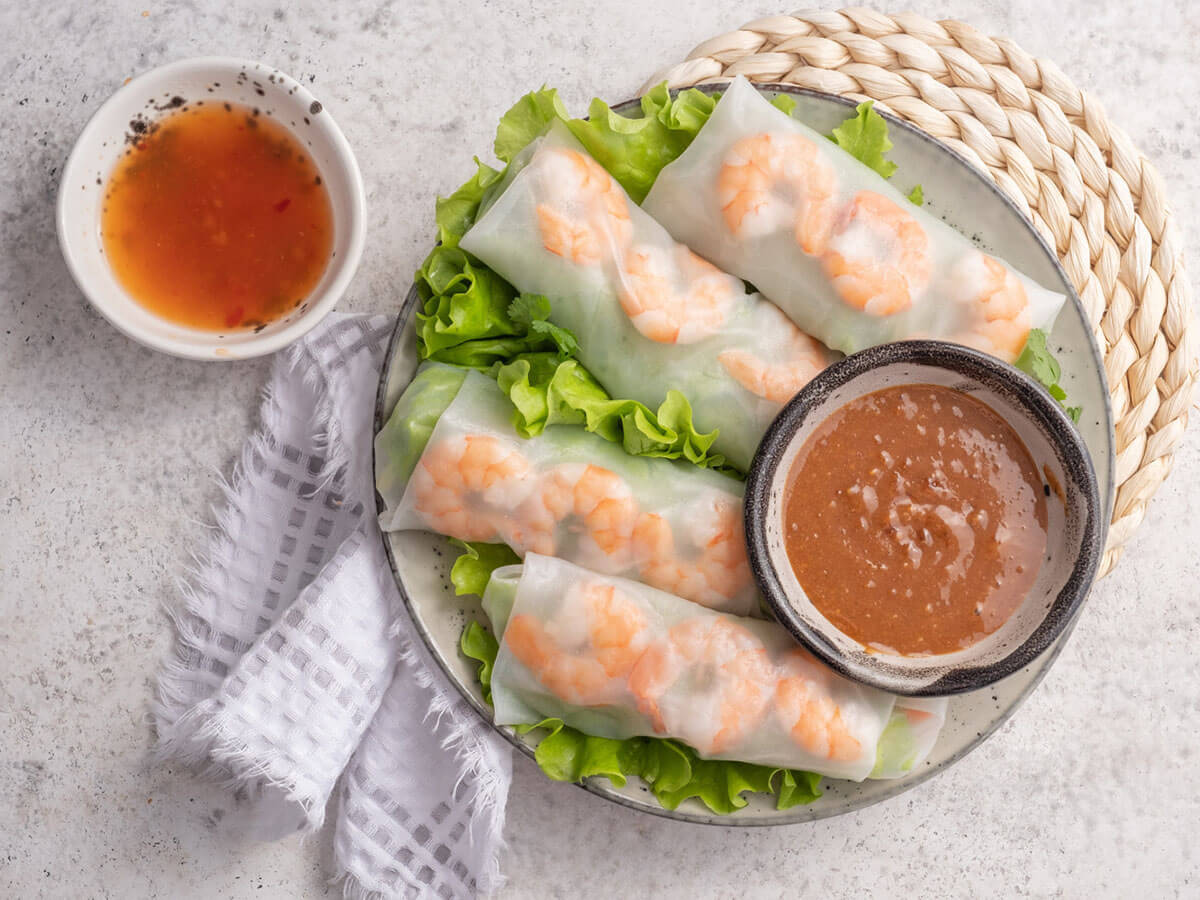
Gỏi cuốn (Vietnamese Spring Rolls)
Origin: Vietnamese cuisine
Main Ingredients: Shrimp, pork, herbs, rice vermicelli, wrapped in rice paper
Cooking Method: Fresh, not fried
Serving Temperature: Room temperature or chilled
Texture: Light, refreshing
Dipping Sauce: Hoisin sauce with peanuts or fish sauce-based dip
Customization: Highly customizable with fillings
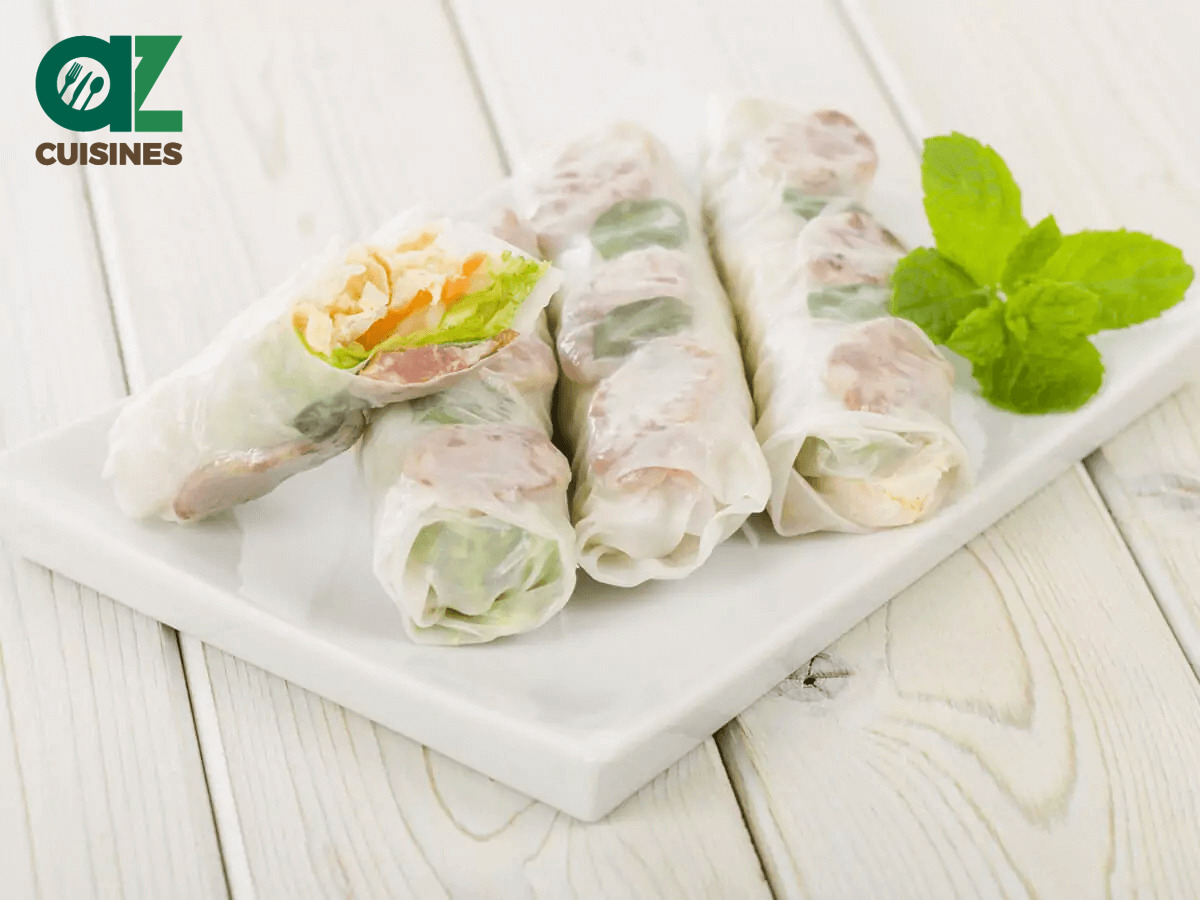
Bò bía (Vietnamese Popiah)
Origin: Vietnamese adaptation of Chinese Popiah
Main Ingredients: Jicama, carrot, sausage, dried shrimp, egg, wrapped in rice paper
Cooking Method: Fresh, not fried
Serving Temperature: Room temperature or chilled
Texture: Varied textures with a mix of savory and sweet
Dipping Sauce: Often served with a sweet and spicy sauce
Customization: Highly customizable with fillings
Additionally, be sure to check out the commonly asked questions about Gỏi Cuốn.




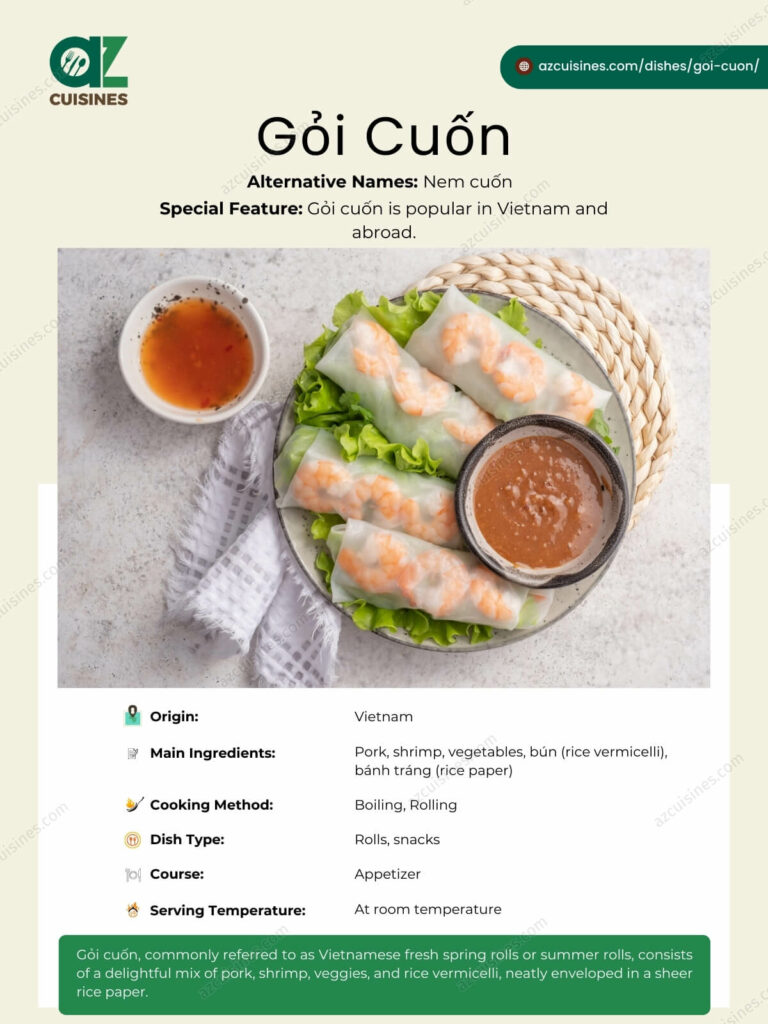
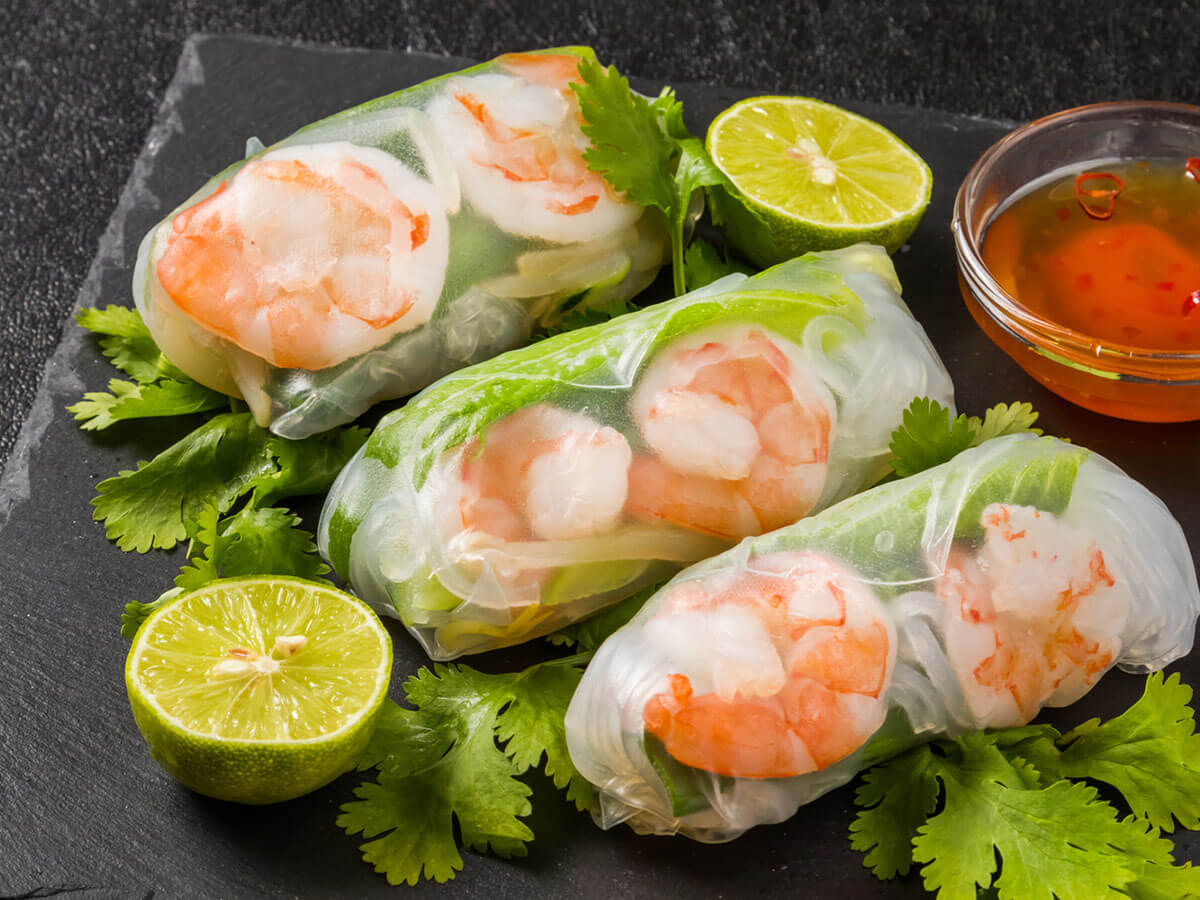
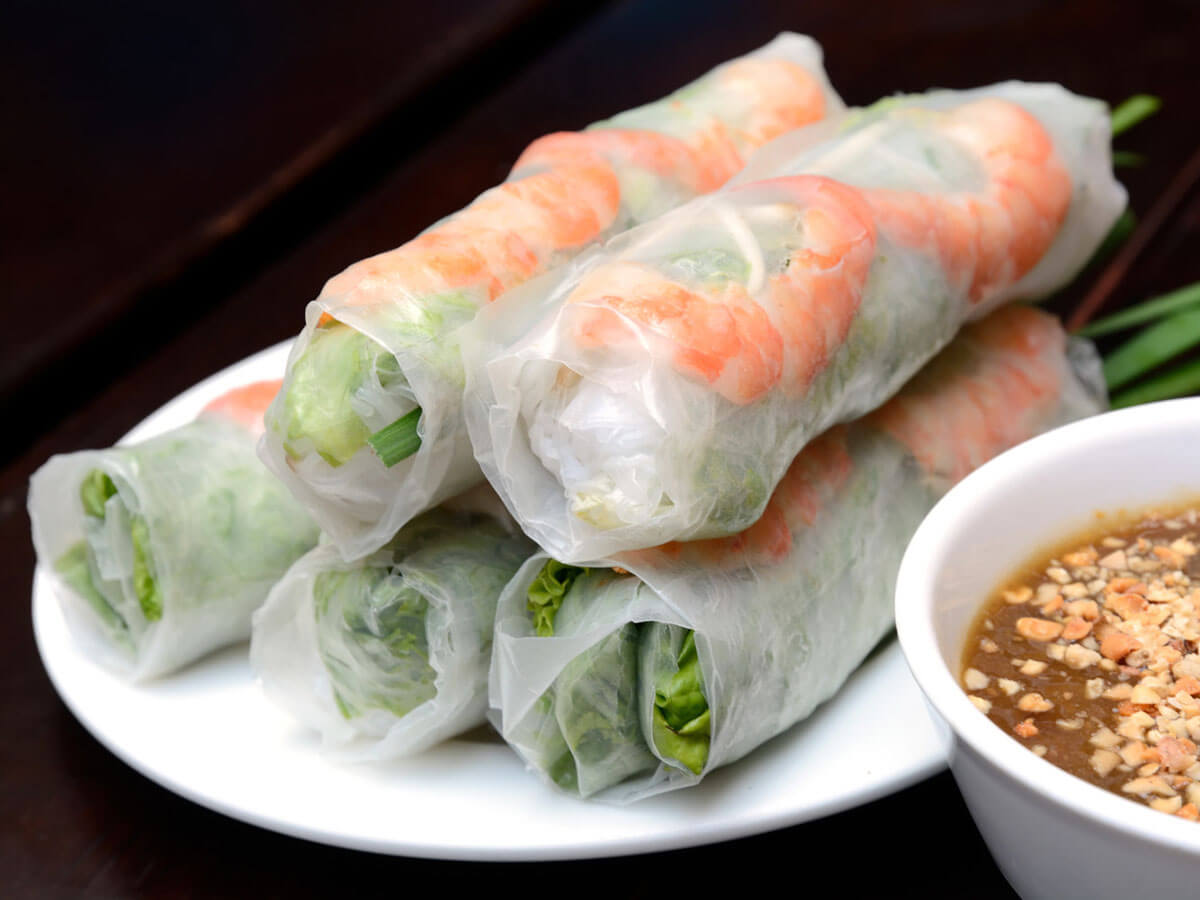



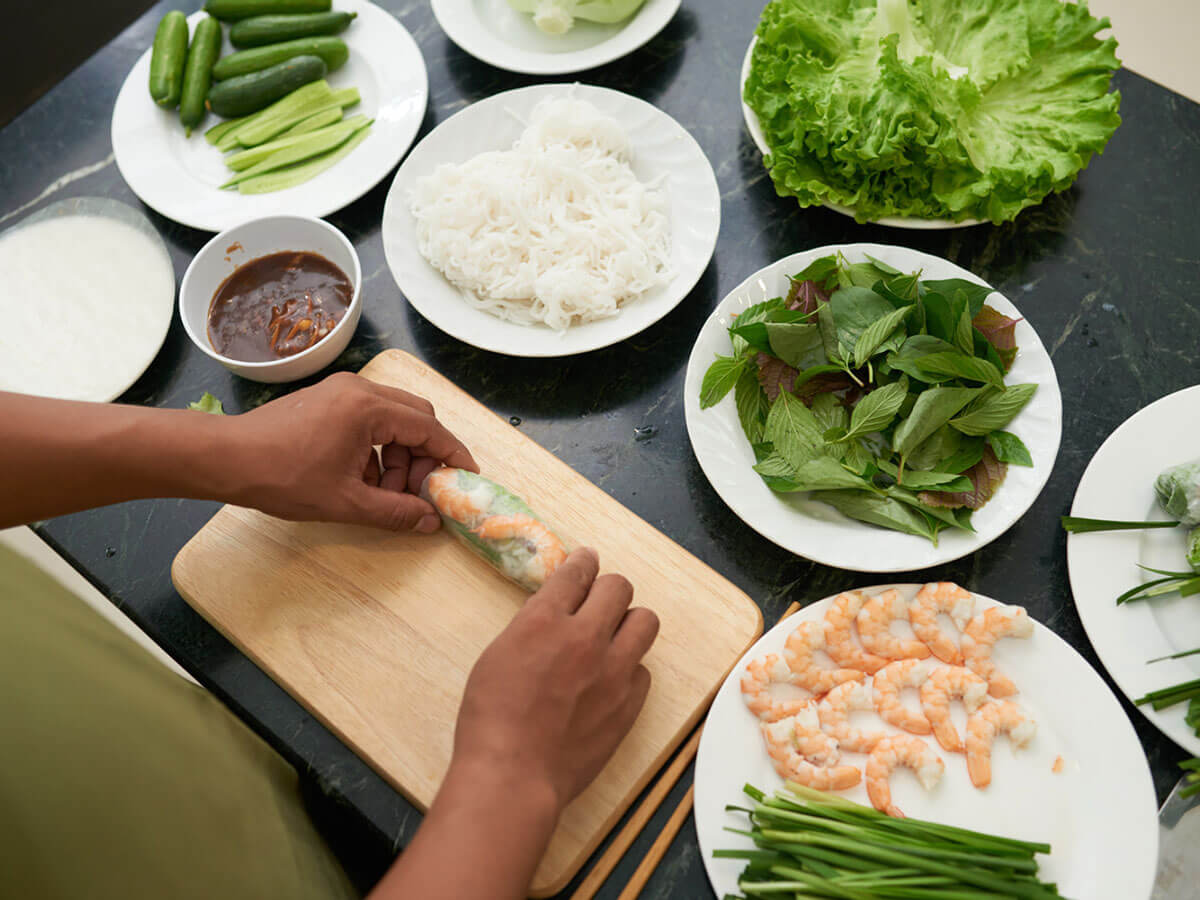
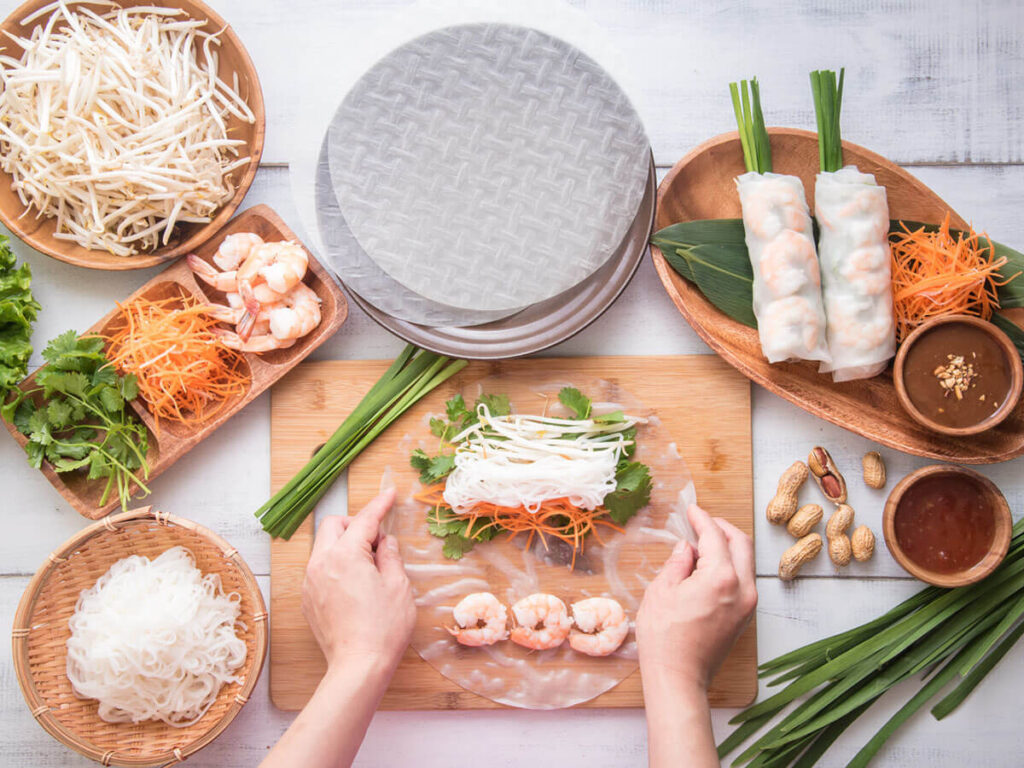

Truc Tran (Kris)
Senior Food Editor
Expertise
Home Cooking, Meal Planning, Recipe Development, Baking and Pastry, Food Editor, Cooking-video Maker, Vietnamese Food Evaluation Expert
Education
Truc Tran (Kris), an experienced food writer and editor, is great at exploring and describing global cuisines, from simple street food to fancy dining. In her writing, she skillfully mixes different flavors, cooking methods, and culinary traditions, showing the unique character of various cultures through their food and drinks. On azcuisines.com, Kris highlights her knowledge, especially in Asian cuisine and worldwide traditional dishes.